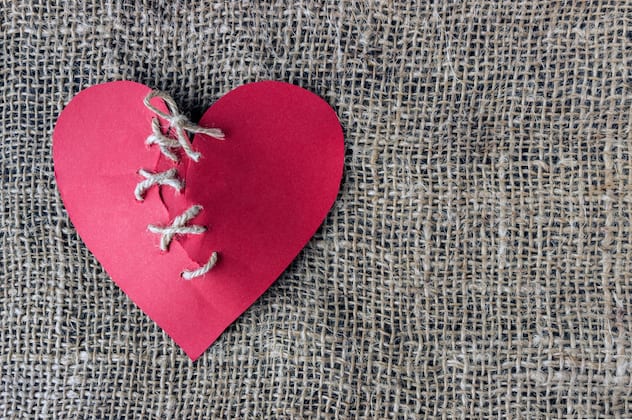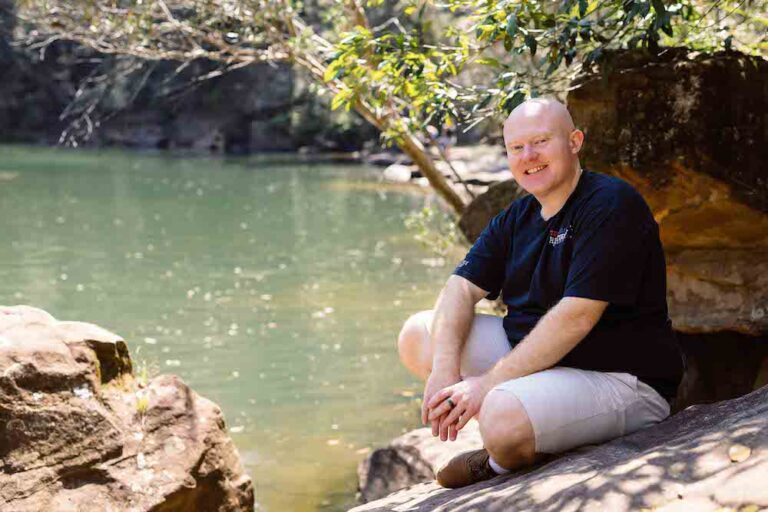Traumatic events shake us to the very core and the resulting pain can be almost unbearable for many … but we may have hit on the key to understanding how to best help people to recover from it – community connectedness.
Adam* still remembers the moment his father broke the news to him. His sister had died suddenly and violently, a young woman here one moment and then gone the next. Almost 25 years has passed since that day but the very fabric of what defines Adam is impacted by the events surrounding the loss of his sister. In the beginning, he thought the traumatic memories of that would diminish moment in time but they haven’t gone away; they have ebbed and flowed as those upsurges of grief have shifted over the years.
“My world view was changed forever because of that catastrophic loss,” Adam explains, “but I don’t expect that will ever change for me, for my parents, her high-school friends as well as the small community we grew up in.” Now a father himself, he finds the loss of his sister impacts his young daughter, a daughter who never met her aunt but still reels from the way she was taken from them. Adam says the loss touches all aspects of his life – it triggers anxiety about bad things happening, he is wary of others and he no longer looks at the world through rose-coloured glasses – but he does have a very clear sense about what he is grateful for. Adam describes it as a lasting legacy of the shock, sadness and growth that came with the loss of his sister, something that those around him struggle to comprehend given she died so long ago.
Trauma has a way of binding together people with shared experiences and helps them to shape how they make meaning from their lives, in an effort to find peace from what has happened. So how can we understand healing and trauma from both the perspective of the person who experiences it and those interconnected through family or community?
High impact
Traumas, and exposure to traumatic experiences, are part of much of the populations’ lives. A recent New Zealand Health Survey found that more than 6 per cent of adults have been diagnosed with an anxiety disorder, including post-traumatic stress disorder. There are wide ranges of events in a person’s life that can be considered traumatic. Trauma can include natural and manmade disasters, psychological and physical traumas, and acts of deliberate violence and even events that can be culturally or spiritually violent or distressing. Judith Herman, a Harvard-based researcher and psychiatrist, defines trauma as “events [that] involve threats to life or bodily integrity, or a close personal encounter with violence and death. They confront human beings with the extremities of helplessness and terror, and evoke the responses of catastrophe”. As a community we are also exposed to the traumas of others who are not known to us, through the broadcasting and sharing of news in mainstream media and social media. These events also have the capacity to injure us as well as those around us.
Irrespective of these definitions, trauma can sometimes be judged by the community as whether an event is serious enough to make a lasting impact. Despite the awareness of trauma and its effects, there is a commonly held view that people will be momentarily impacted and that, over time, the pain will diminish. Our conversations about trauma often sit on a linear, more straightforward, path. The idea is that if something occurs, we take time to process that trauma and then eventually our life returns to normal. However, recent research, as published in the NCBI article, ‘Understanding the Impact of Trauma’, tells a different story. We now see that trauma, irrespective of when it occurs and, in some circumstances, of whether it happens directly to us, can have long-lasting impacts. The ripple effect touches who we are, how we parent, our family and friends and the community around us. A shift in conversation is required, one that identifies a traumatic event as not just a moment in time but a life event that can shape who we are and what we value – for better and worse.
The long-reaching effects
Trauma rarely has one victim. When professionals first intervene following a traumatic event, the focus is usually on the person who was exposed to the trauma. We must not lose sight of the fact that living with, or growing up alongside, that traumatised person can also be profoundly impactful. Donna Jackson Nakazawa, a campaigner who raises awareness of childhood trauma and healing, speaks in her book, Childhood Disrupted, of the sudden loss of her father at the age of 12 – and the chronic physical illnesses she endured for decades afterward. She explains that it wasn’t until she was 51 that a doctor finally asked her about the childhood traumas she experienced as a way of understanding how she might heal. Trauma can shape the way that relationships progress, how conflict is managed within families and how successive generations respond to life events.
Finding meaning in suffering
The language that is shared about trauma is often negative. We speak of disorders from surviving trauma, about difficulties in sustaining relationships and triggers that might shape the way a person engages with their community. However, there is also scope for post-traumatic growth. This growth is often seen through people pausing and reflecting on what has occurred to them and to seek opportunities to learn from how they are reacting. Employing a mindset that focuses on growth rather than being fixed on a cycle of fear, blame, shame and anger can provide a chance to make meaning from what has occurred. We see this in communities around the globe when they seek out new ways to become resilient after traumatic events. With March 2017 terror attack in London, which resulted in the death of five people in the Westminster area, the language initially focused on seeking ways to blame or make sense of disenfranchised individuals who use terror as a way of gaining control. Yet, community initiatives that symbolised connectedness, slowly began to emerge in the days after the attack. Images of distress were replaced by solidarity – of Muslim women wearing blue, to signify peace, standing together in a moment of silence on Westminster Bridge to show support. In these ways, where growth comes from trauma, communities continue to acknowledge the loss but also speak about how they might move forwards from what has occurred.
The threads of trauma passed down from generation to generation can change the stories of communities as well as families – they bruise and wound people but they also offer opportunities to reflect on new ways of healing, understanding values and reclaiming a new sense of self. Despite more than a quarter of a century passing since Adam’s loss, he still sees the way the trauma has reverberated within and around his family. For some, like Adam, this becomes their new normal where the world is changed but there are also possibilities for moving forward.
The next generation
Intergenerational or transgenerational trauma relates to a catastrophic event (or events) that can be felt in two ways; either by a person who then passes that story down to successive generations or where the effects of the trauma are passed down through behaviours, parenting, and other social determinants of health. Intergenerational trauma can often be minimised when people ask “How does the past have anything to do with now?”. Awareness and sensitivity is key when responding to generational trauma.
In other circumstances, where intergenerational traumas are not related to political intervention or whole of community impacts, families can still feel the impact of past events where the scale of trauma was different. Studies have identified that trauma can almost be transmitted between and within generations through stories shared, the anxieties present and the connections made about how the world should be viewed. Placing importance on the fact that trauma does not end with one person’s experience can provide scope in our understanding of how trauma can impact both the past, present and the future.
How can you help?
Ministry of Health NZ suggests that help for anyone experiencing trauma can be both practical and emotional.
Practical ideas might include assisting with childcare or food shopping in the early days, offering to provide help with transport to appointments, watching the news on behalf of the individual or fielding phone calls to limit exposing people to the retelling of their trauma.
Emotionally the ripple effects of trauma can last for weeks, months and years after the event. People who experience trauma may want to guide you as to how you can help. If the person is not in a position to suggest helpful ways, you might want to focus on:
- Listening with empathy.
- Limiting suggestions of what has worked for you or for others you know.
- Suggesting people seek help when the trauma is impacting their day-to-day life or becoming more complicated.
- Accepting that events unrelated to the trauma may be challenging for people. Life experiences such as having children, moving or exposure to other world events can trigger reminders of what has occurred, so honour this.
Where to get help
In Australia, call Lifeline on 13 11 14, or beyondblue on 1300 22 4636
In New Zealand, call the 24/7 Helpline on 0800 543 354, or Victim Support on 0800 842 846.







